Neerim Junction - Glen Nayook Bushland Reserve

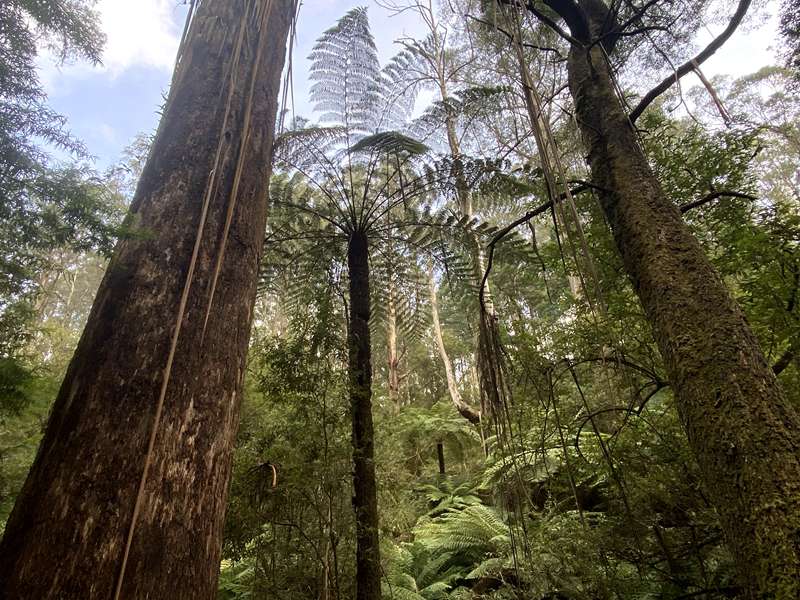
Nayook Reserve is a delightful fern glen on the east branch of the Tarago River and a remnant of a Mountain Ash rainforest.
The Crown reserved the 9-hectare area in 1907 as a site for public recreation. The reserve is suitable for a short visit or picnic and has been a popular spot for visitors since 1914.
Special features of the reserve include the tree fern gully where the river runs under ground for 100 metres, the split rocks and the moss covered granite boulders.
Walking Track:
Take an enjoyable walk to explore one of the ancient forests of Gippsland.
Walking down to the picturesque ferny glade on the Little Tarago River, you'll pass through wet sclerophyll (or hard-leaved) forest, complete with towering stands of Mountain Ash.
Make your way through granite boulders (The Skinks) that have fallen into the creek over 1000 years ago forming the underground river and many sink holes. From here you'll wind your way into a ferny glade amongst Cool Temperate Rainforest. Signs along the route point out features of interest.
If you hear a birdcall of striking clarity that seems to fill the forest, you're probably listening to a lyrebird. Lyrebirds rely totally on dense moist forest like this for their survival. Look for loose earth along the edge of the tracks in the park. Chances are a lyrebird has been scratching the soil with its powerful feet for its dinner of insects, worms and crustaceans.
The 1.5km walking track with interpretative panels has a return trip taking approximately 60 minutes. Some sections of the track are quite steep requiring walkers to be moderately fit. The track is not suitable for access by wheelchairs.
At the car park there is a sign indicating where the walking track starts. After a short distance there is the following sign which shows two ways of doing the route.
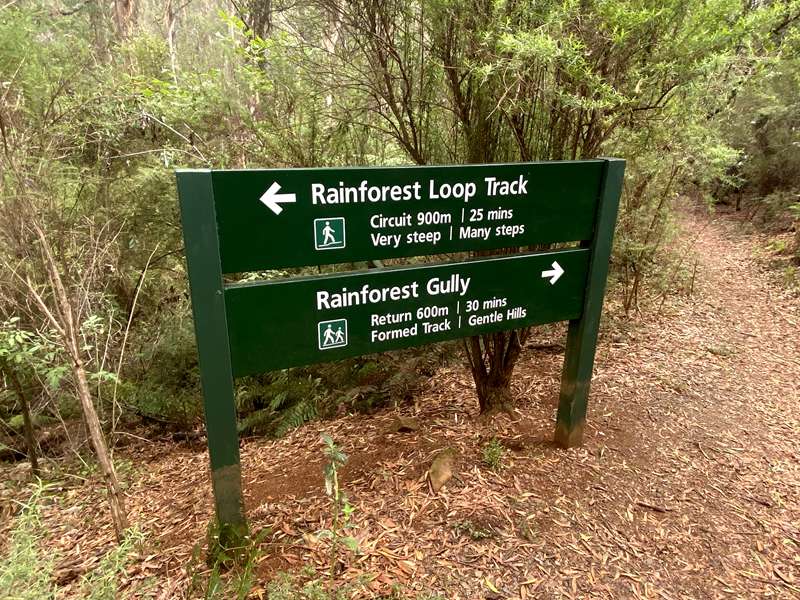
We would suggest taking the easier Rainforest Gully route. At the bottom of the gully you can decide whether to return along the same path or take the shorter steep steps back to this point. We're not convinced that the all the signs and distances make total sense in the reserve but the Rainforest Gully route is a 600m gently sloping track down to the bottom of the gully passing lots of highlights while the other route is 300m down steep steps. We took the steep steps back from the bottom of the gully which was not too difficult because the views across the gully was amazing.
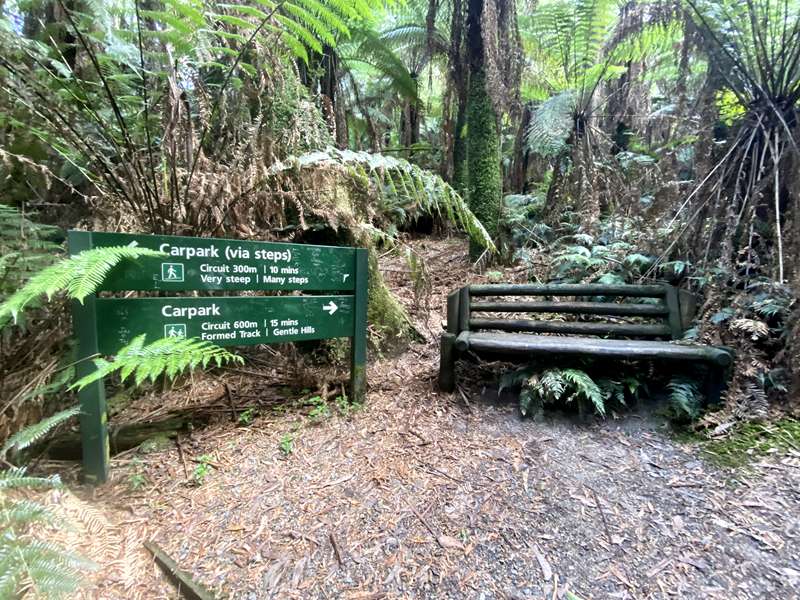
River of Soil
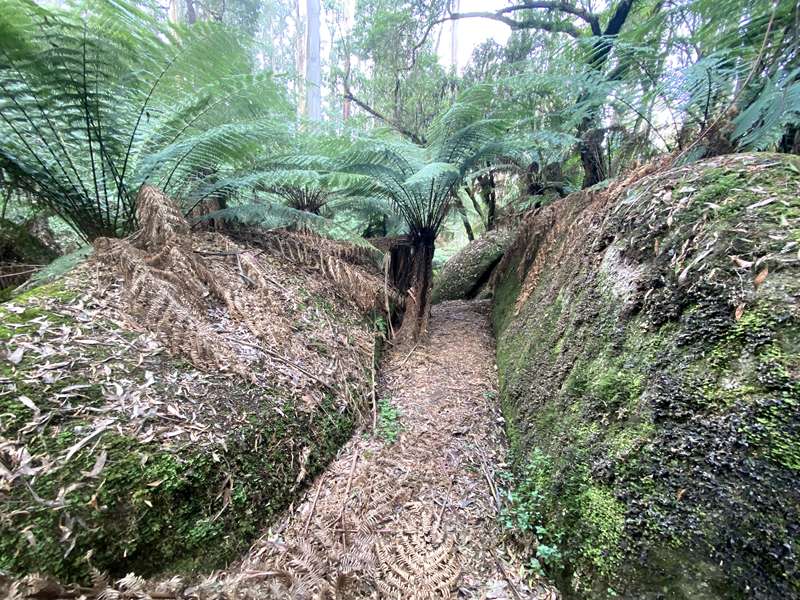
Here at 'The Skinks', large boulders have fallen into the river valley, and the stream passes underground for some distance.
In its place on the surface, runs a river of the dark clay loam soil commonly found in mountain forest areas.
The boulders which clog the river valley here are blocks of very old granite formed in the Devonian Period some 35 million years ago.
Today they are home to an array of lichens at and mosses that in turn provide habitat for a range of invertebrates and other small forest life.
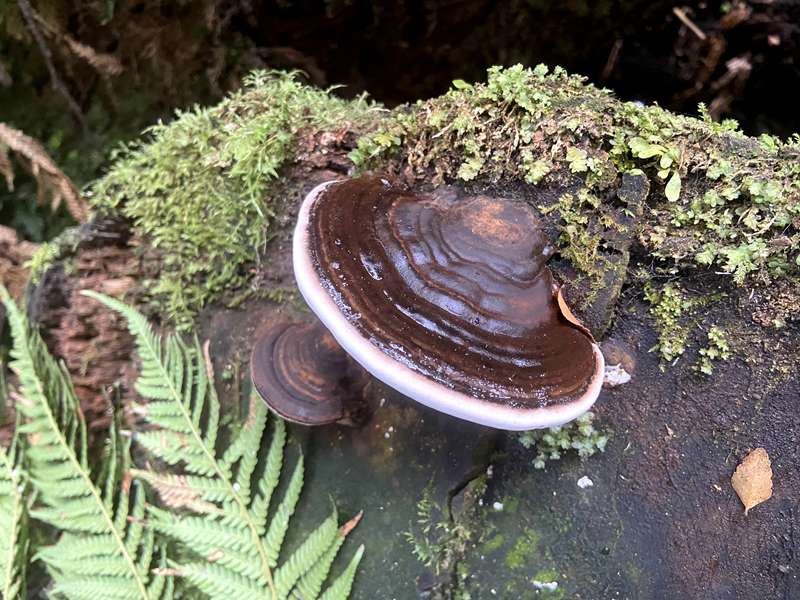
Kings of the Forest
When your scientific name (Eucalyptus regnans) means the reigning royal eucalypt and you're the tallest flowering plant in the world there's no argument as to who's king of the forest.
At 40 metres tall, the immense tree here is only half the size of the largest recorded Mountain Ash. This Mountain Ash stand was affected by fire in 1926 and again in 1939. While most of the larger trees survived, others were killed creating space for a new crop of Mountain Ash seedlings to establish themselves. You can spot these relative newcomers by their similar sized canopies and tree trunks.
A World of Ferns
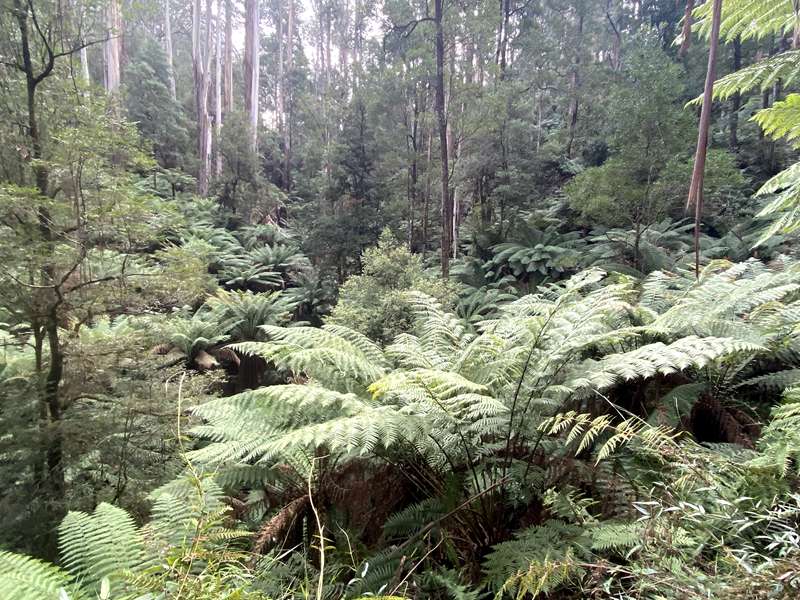
There are approximately 20 different species of ferns within the reserve.
Some of these - like tree ferns - rely on their own shallow root systems for support. This however leaves them vulnerable to strong winds which can easily blow them over.
Ground ferns like Gristle Fern avoid this problem by keeping a low profile.
Others include the epiphytes that latch onto the trunks and branches of other plants. Here they can take their moisture and nutrients from the air and surface of the host plant, without harming the host in the process.
Soft Tree-ferns (Dicksonia antarctica) are the waist to head high ferns which abound here and are one of the most common tree ferns in Glen Nayook.
Facilities:
3 picnic tables are located next to the car park and there are some seats beside the walking track. The closest public toilets located at Neerim South and Noojee.
Fauna
Wildlife including wombats, possums, swamp wallabies and lyrebirds inhabit the reserve. There is likely to be a variety of other small mammals including Sugar Gliders, which become active at nightfall.
Flora
A feature of the vegetation in the reserve is the picturesque tree fern gully with some rain forest species including Myrtle Beech. The over storey is dominated by Mountain Ash with a dense understorey of tree ferns and epiphytes.
Terrestrial and epiphytic orchids are common amongst the tree ferns along the Tarago River. Watch for them flowering in spring!
Geology
The bedrock in the channel of the valley in which Glen Nayook sits is coarse-grained Devonian granite, otherwise known as Tynong granite.
A feature of the reserve is an area where large granite boulders have fallen into the river valley. This area is known as "The Sinks" and the river runs underground for 100 metres.
The soil type above the river area is the dark brown clay loam, which is common in the Neerim area.
Height above sea level is approximately 400m at the entrance to the walking track.
Location
Glen Nayook Reserve is situated at the end of Paynter Road, Neerim Junction.
Review:
A totally magical place which has many interesting highlights including tall mountain ash trees mingled with lots of tree ferns, a watercourse running through the area, huge granite boulders covered in mosses, fungi and some fallen mountain ash trees which you have to scramble over. This walk is very shaded and would be a good summer walk.
Photos:
Location
90 Paynter Road, Neerim Junction 3832 View Map








